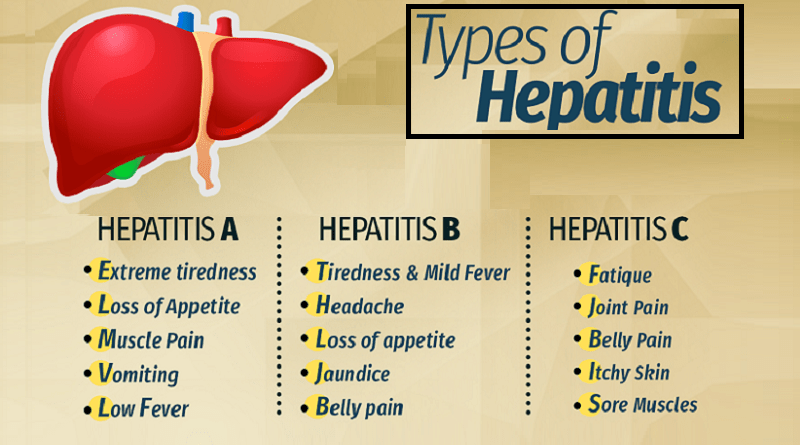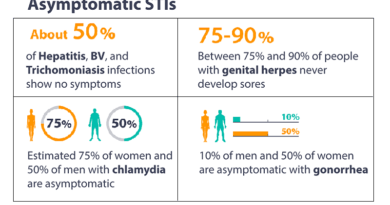Understanding Hepatitis Virus Types: Symptoms and Treatment Options
Hepatitis, which is inflammation of the liver, can be caused by different factors such as drug and alcohol abuse, autoimmune diseases, and viral infections, with hepatitis viruses of different types being the most common. The condition can be self-limiting or can progress to fibrosis (scarring), cirrhosis, or liver cancer. [3]
There are several types of hepatitis viruses, and each one spreads and affects the liver in a different way. They are A, B, C, D, and E viruses. In this article, we will explore each of them, how transmitted, their symptoms, and treatment options.
Hepatitis Virus Types
Hepatitis A Virus (HAV)
HAV is a contagious liver infection caused by the hepatitis A virus. It’s transmitted through contact with fecal matter, contaminated food, or water. Symptoms of HAV include fever, fatigue, loss of appetite, nausea, vomiting, and abdominal discomfort. Most people with HAV recover without treatment within a few weeks. Hepatitis A is a short-term illness and may not require treatment. (SOURCE)
Hepatitis B Virus (HBV)
HBV virus (HBV) is a member of the hepadnavirus group, which are double-stranded DNA viruses. Unusually, they replicate by reverse transcription. It’s endemic in the human population and hyperendemic in many parts of the world. A number of variants of this virus have been described. [6]
It’s transmitted through blood transfusions, sharing needles, or sexual contact with an infected person and can cause an acute liver infection that may lead to chronic liver disease, serious liver damage, liver failure, or liver cancer.
Symptoms of HBV include fatigue, nausea, vomiting, abdominal pain, and jaundice. There is no cure for HBV, but antiviral medications can help manage symptoms and reduce the risk of complications. [5]
Hepatitis C Virus (HCV)
HCV, which is a blood-borne virus, can cause liver inflammation. It’s transmitted the same way as HBV, but likely through blood transfusions and sharing needles. It can cause chronic liver disease, which may lead to liver failure or liver cancer. Most people with HCV do not experience symptoms, and the virus can go undetected for years. Antiviral medications can help cure HCV, but early detection is important for successful treatment.
Hepatitis D Virus (HDV)
HDV is also a blood-borne virus, like HCV, and can cause liver inflammation. It’s not stand-alone as it only affects people who are already infected with HBV. Similarly to HCV, It’s transmitted through blood transfusions, sharing needles, or sexual contact with an infected person. It, also, causes acute or chronic liver disease, which can lead to liver failure or liver cancer. There is no cure for it, but antiviral therapy can help manage symptoms and reduce the risk of developing serious health conditions.
Hepatitis E Virus (HEV)
HEV is similar to HAV being a water-borne virus that can cause liver inflammation, It’s transmitted, also, through contaminated water or food. It’s more common in developing countries with poor sanitation. Symptoms include fever, fatigue, loss of appetite, nausea, vomiting, and abdominal discomfort. Like HAV, most people recover without the need for treatment within a few weeks of infection.
| Hepatitis Virus | Transmission Methods | Symptoms |
|---|---|---|
| HAV | Contact with fecal matter, contaminated food, or water | Fever, fatigue, loss of appetite, nausea, vomiting, abdominal discomfort |
| HBV | Blood transfusions, sharing needles, or sexual contact with an infected person | Fatigue, nausea, vomiting, abdominal pain, jaundice |
| HCV | Blood transfusions, sharing needles, or sexual contact with an infected person | Most people do not experience symptoms but can lead to chronic liver disease, liver failure, or liver cancer |
| HDV | Blood transfusions, sharing needles, or sexual contact with an infected person; only affects people already infected with HBV | Acute or chronic liver disease, liver failure, or liver cancer |
| HEV | Contaminated water or food | Fever, fatigue, loss of appetite, nausea, vomiting, abdominal discomfort |
SUMMARY
This article provides a comprehensive guide to the different types of hepatitis viruses, including hepatitis A, B, C, D, and E. They can cause serious liver damage and can lead to liver failure or liver cancer. The article covers their symptoms, transmission methods, treatment options, and the importance of early detection. While hepatitis B has no cure, other viruses, such as HAV and HEV can be cured.
SOURCES
[1] https://www.cdc.gov/hepatitis/abc/index.htm
[2] https://www.healthline.com/health/hepatitis
[3] https://www.who.int/news-room/questions-and-answers/item/hepatitis
[4] https://www.webmd.com/hepatitis/digestive-diseases-hepatitis
[5] https://www.hepmag.com/blog/different-types-hepatitis
[6] https://www.ncbi.nlm.nih.gov/books/NBK7864/




